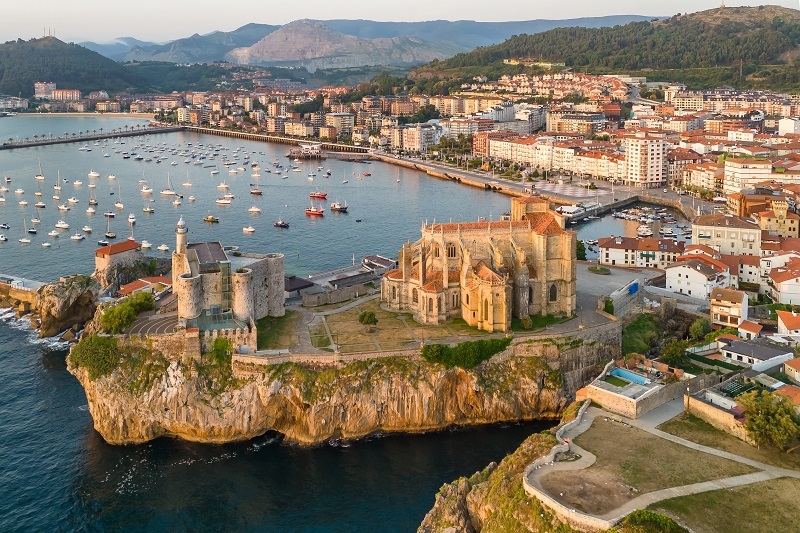
When we say Spain, the first thought that comes to our mind is the picture of flamenco dancers, tapas, and beaches. But for the traveling adventure-seeker who is looking for something more, Spain has a lot more to offer than a holiday—Spain offers an experience of a spiritual nature. With its centuries-old history of Jews, Muslims, and Christians cohabiting, fighting, and working together, Spain is one of the world's most fascinating destinations to go to for those with an interest in interfaith studies and coexistence travel spain.
An interfaith travel Spain tour can transform a vacation into a soul pilgrimage, combining history, spirituality, and culture into an adventure of human harmony that will never be forgotten.
Instead of having heritage compartmentalized in separate silos like it is much of the world, Spain has a blended history. On one city block, there might be a thousand-year-old synagogue, a former mosque turned cathedral, and a convent full of relics of the three traditions.
The loveliness of an interfaith tour Spain lies in its ability to show both harmony and discord. It has known times of living together and the prosperity that the faith communities have shared, but also times of expulsion and persecution. For American tourists, with religious diversity becoming increasingly a topic of discussion today, Spain presents an opportunity for us to examine our own cultural tapestry from a historical vantage point.
Apart from sightseeing, interfaith travel Spain also enables us to learn:
Here are a few of them.
Toledo is typically considered the best location to start an interfaith tour Spain. Toledo represents the Jewish Muslim Christian heritage Spain and is known as the "City of Three Cultures."
Highlights include:
Meandering through the cobblestone streets of Toledo, one can feel how religious traditions once overlapped in day-to-day life.
Córdoba is another interfaith tourism pillar in Spain. The Mezquita-Cathedral has been the very epitome of coexistence. What was once one of the world's most magnificent mosques came to be converted into a cathedral afterwards. Its seemingly endless row of arches, mosaics, and chapels blends Islamic and Christian architecture very comfortably.
Córdoba's ancient Jewish Quarter is another dimension. There, you may observe one of the last synagogues remaining in Spain and imagine the existence of Jewish scholars who prospered before 1492.
Granada's Alhambra Palace is widely described as a poem in stone.
The city is a perpetual classroom of coexistence, a travel destination in Spain.
Seville is famous for its Gothic cathedral, but look around you and you observe Islamic and Jewish presence on all sides. The Giralda tower originally served as a minaret for a mosque, and the Alcázar palace complex has Moorish and Christian architecture. Seville, on an interfaith tour Spain makes you understand how buildings themselves narrate the story of centuries of cultural intermixture.
Here is a glimpse of it.
In certain periods, Christians, Jews, and Muslims coexisted in spectacular forms. They borrowed from one another in literature, philosophy, medicine, and science. For tourists today, it is a celebration of the potential for human cooperation.
The expulsion of Jews and Muslims in 1492 and the Reconquista were sour endings. An authentic interfaith travel Spain experience doesn't hide from this history—it confirms the lessons of resiliency and reconciliation.
Most of them are not museums but living spiritual sites Spain. Churches are for prayer, mosques for the call to prayer, and synagogues for shared celebration. To behold this continuity is what makes the experience so compelling.
From Mezquita's arches to Alhambra's decorated work, Spain's places of worship remind us of the strength of art as an act of devotion transcending faiths.

Here’s an itinerary.
This is the kind of tour that combines history, religiosity, and culture, which suits American tourists the best to attain a balance of information regarding Jewish Muslim Christian heritage Spain.
Here are a few of them.
For American visitors, Spain's religious tolerance history speaks to them on several levels:
Spain is more than a European getaway—Spain is a spiritual seminar. In experiencing interfaith travel Spain, you travel through centuries of which cultures blended into each other and separated, in which religions evaluated each other's wisdom, and where buildings narrate the history of passion and warfare.
An interfaith Spanish tour enables you to experience how the Jewish Muslim Christian heritage Spain lives on today, giving you a glimpse of breathtaking spiritual Spain attractions and showing you how Spain's coexistence works today. Above all, it makes you remember that Spain's culture-blending tourism is less about the past—it's about imagining a future for dialogue and mutual respect. For visiting Americans seeking an experience that blends religion, history, and cultural forays, Spain invites you to become a part of its living spiritual tapestry. Please note that this information may not be fully accurate. Verify independently before use.
This content was created by AI